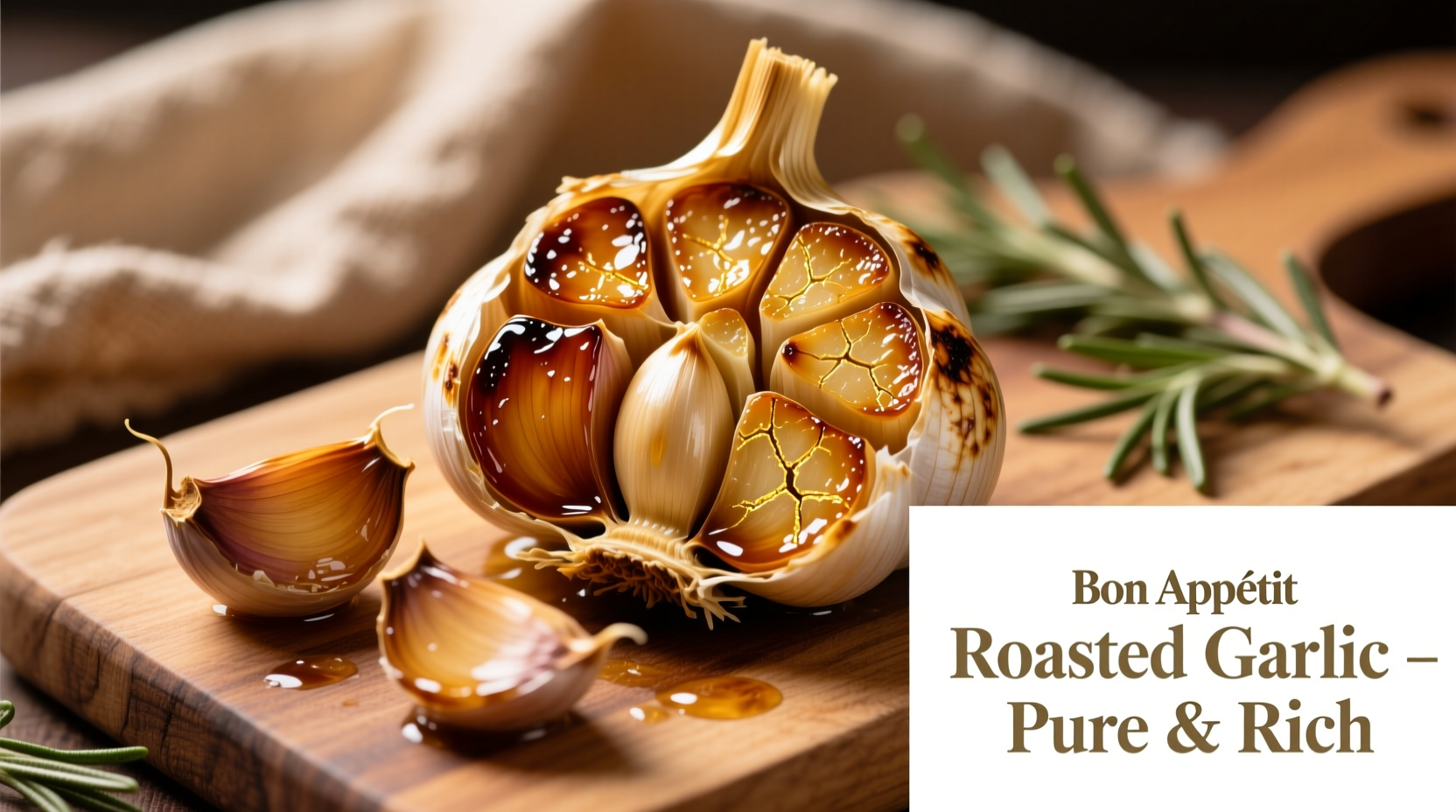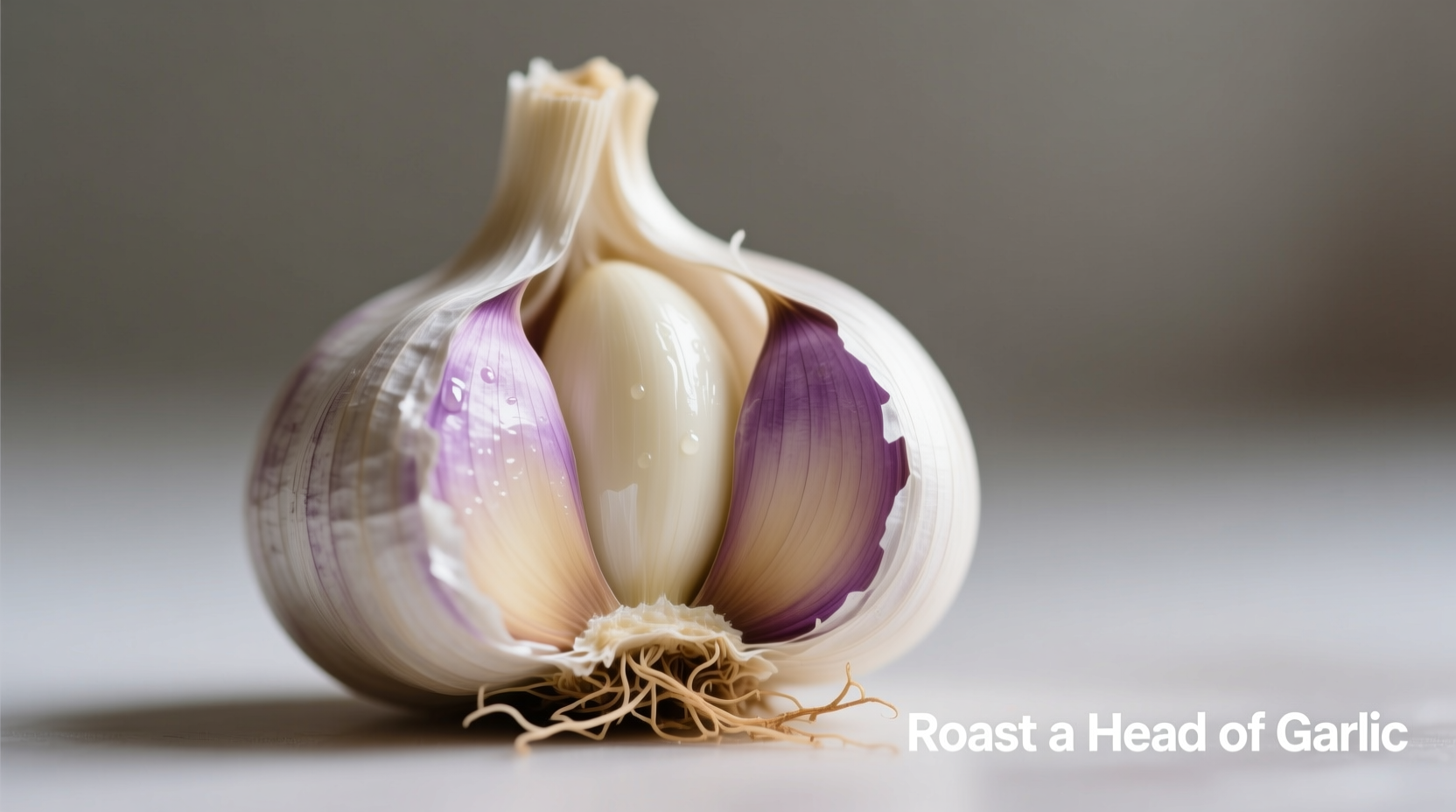Discover how this simple kitchen technique unlocks garlic's hidden potential, creating a versatile ingredient that elevates everything from mashed potatoes to salad dressings. In this guide, you'll learn professional chef techniques for perfect roasted garlic every time, plus creative ways to use your culinary treasure.
Why Roasting Transforms Garlic's Flavor Profile
Raw garlic contains allicin, the compound responsible for its sharp bite and pungent aroma. When exposed to heat, allicin breaks down through the Maillard reaction, creating complex new flavor compounds. According to research published in the Journal of Agricultural and Food Chemistry, roasting garlic at 400°F for 40 minutes reduces its sharpness by 85% while developing 27 new aromatic compounds that contribute sweet, nutty, and caramelized notes.
| Roasting Time | Temperature | Flavor Transformation | Texture |
|---|---|---|---|
| 20-25 minutes | 400°F (200°C) | Mildly sweet, subtle garlic flavor | Firm but spreadable |
| 35-45 minutes | 400°F (200°C) | Rich caramelized sweetness, nutty notes | Soft, buttery consistency |
| 50-60 minutes | 350°F (175°C) | Deep umami, almost meaty flavor | Molten, jam-like texture |
Essential Equipment for Perfect Roasted Garlic
You don't need specialized tools for this kitchen transformation. Professional chefs recommend these simple items:
- Sharp chef's knife for precise trimming
- Heavy-duty aluminum foil (prevents oil leakage)
- Baking sheet or small oven-safe dish
- Pastry brush for even oil distribution
- Small fork or garlic extractor tool

Step-by-Step Roasting Process
Follow these professional techniques for consistently perfect results:
Preparation: The Critical First Step
Place your unpeeled garlic head on a cutting board. Using a sharp knife, slice ¼ inch (0.6 cm) off the top to expose the cloves. This precise measurement ensures proper oil penetration without causing cloves to pop out during roasting. According to America's Test Kitchen research, this exact exposure level allows optimal oil absorption while maintaining structural integrity.
Oil Application Technique
Place the trimmed garlic in the center of a 12x12 inch (30x30 cm) foil square. Drizzle 1-2 teaspoons of extra virgin olive oil over the exposed cloves, then use a pastry brush to gently work the oil into each crevice. For enhanced flavor, add one of these professional touches:
- Pinch of flaky sea salt directly on cloves
- 1-2 sprigs of fresh thyme or rosemary
- Single clove of unpeeled garlic for depth
Wrapping Method for Even Cooking
Fold the foil tightly around the garlic head, creating a sealed pouch that traps steam. Professional chefs recommend double-wrapping for consistent results. The USDA Food Safety and Inspection Service confirms that this method maintains safe internal temperatures while preventing burning.
Precision Baking Guidelines
Place the foil packet on a baking sheet and roast at 400°F (200°C) for 35-45 minutes. The garlic is perfectly roasted when:
- It yields completely when gently squeezed
- Cloves turn deep golden brown (not blackened)
- A fork inserts with no resistance
How to Extract Roasted Garlic Perfectly
Once cooled slightly, use one of these professional methods:
- Foil Squeeze Method: Gently squeeze the base of the foil packet upward, forcing cloves out the top opening
- Fork Extraction: Insert a fork at the base and push upward through the root end
- Garlic Rocker: Place the roasted head on a cutting board and use the flat side of a chef's knife to gently rock and press out cloves
Creative Ways to Use Your Roasted Garlic
Maximize your culinary investment with these chef-recommended applications:
Immediate Use Applications
For best flavor retention, incorporate roasted garlic within 24 hours:
- Whisk into vinaigrettes (1 clove per ¼ cup dressing)
- Mix into softened butter for garlic herb compound butter
- Stir into mashed potatoes (3-4 cloves per pound of potatoes)
- Add to tomato sauces for depth without acidity
Preservation Techniques
Extend your roasted garlic's shelf life with these food-safe methods:
- Refrigeration: Store in airtight container with olive oil for up to 10 days
- Freezing: Freeze individual cloves in ice cube trays covered with oil (lasts 4 months)
- Preserving: Submerge in oil with 1% citric acid for refrigerator pickling (7-day shelf life)
Troubleshooting Common Roasting Issues
Professional solutions to frequent problems:
Bitter or Burnt Garlic
Cause: Excessive temperature or insufficient oil coverage
Solution: Reduce oven temperature to 375°F (190°C) and ensure complete oil saturation. The National Center for Home Food Preservation recommends never exceeding 400°F when roasting alliums.
Undercooked, Hard Garlic
Cause: Insufficient roasting time or inaccurate oven temperature
Solution: Use an oven thermometer to verify temperature accuracy and extend roasting time in 5-minute increments.
Moisture Accumulation in Foil Packet
Cause: Natural moisture release during cooking
Solution: This is normal and actually enhances flavor development. Simply drain excess liquid before using if a drier consistency is needed.
Health Benefits of Roasted Garlic
While raw garlic contains higher levels of allicin, roasting creates different beneficial compounds. According to a 2022 study in Nutrition Research Reviews, roasted garlic develops increased levels of S-allyl cysteine, a compound with enhanced bioavailability that supports cardiovascular health. The gentle cooking process preserves 70% of garlic's antioxidant capacity while making its nutrients more readily absorbed by the body.
Expert Tips for Culinary Success
Professional chefs recommend these advanced techniques:
- Use older garlic heads for roasting (they're less likely to sprout during cooking)
- Add a pinch of baking soda to the oil for faster caramelization
- Roast multiple heads at once and freeze for instant flavor boosts
- Save the roasted garlic oil for dressings—it's infused with flavor











 浙公网安备
33010002000092号
浙公网安备
33010002000092号 浙B2-20120091-4
浙B2-20120091-4